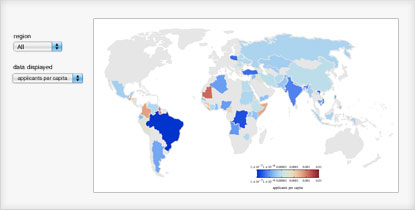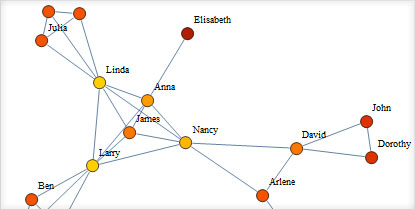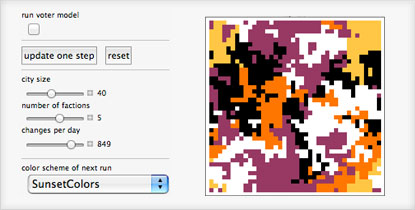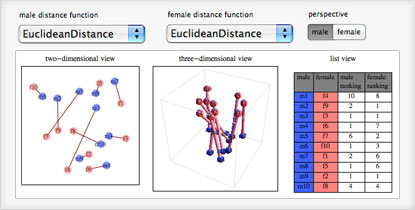The Wolfram Solution forSocial and Behavioral SciencesThe Wolfram social and behavioral sciences solution is an all-in-one system for designing and running experiments, collecting and analyzing data, and reporting results interactively. Includes sophisticated statistical analysis capabilities, built-in socioeconomic data, and instant interactivity and deployment options, as well as the most automated computation and development environment available. |
 |
Wolfram technologies include thousands of built-in functions and curated data on many topics that let you:
- Perform agent-based modeling and simulation of social behavior, customer movements in a store, and much more
- Analyze social networks made of nodes and ties to study the complex sets of relationships between members of social systems at all scales, from interpersonal to international
- Build mathematical models to study criminality, voter patterns, media impacts on consumer behavior, and more
- Analyze all kinds of data including survey data, census data, and more, using built-in data analysis tools
- Combine the extensive built-in demographic and socioeconomic data with your own for extending your models
- Simulation of complex adaptive social systems or artificial societies, composed of interacting agents
- Instantly create fully interactive interfaces for real-time analysis

Using built-in socioeconomic data for computation and analysis

Finding people with more influence in a social network
Does your current tool set have these advantages?
-
Free-form linguistic input produces immediate results without the need for syntax
Unique to Wolfram technologies -
Ready-to-use, easily recognizable functions for statistical and data analysis, along with symbolic report generation
R and Stata do not include report generation -
Instantly create dynamic interfaces that allow you to vary parameters and gain useful insights from datasets
Unique to Wolfram technologies -
Create highly customized, presentation-quality visualizations, including charts, bar charts, scatter plots, and many more
Unique to Wolfram technologies -
Integrated access to historic and current financial, socioeconomic, and geographic data suitable for computation and analysis
Unique to Wolfram technologies -
Complete workflow, from data import to analysis to typeset document or slide show, in a single document
Unique to Wolfram technologies -
Seamless integration of numerics, symbolics, interactive graphics, and all other computational aspects in one system
Unique to Wolfram technologies

A voter model showing how the views of neighbors can influence a neighborhood

An interactive model of sets of stable marriages within a group
Social and behavioral sciences specific capabilities:
- Free-form linguistic input produces immediate results without the need for syntax »
- Easy online data collection from survey or study participants using Wolfram CDF Player-based local applications, or server-based webMathematica technology
- State-of-the-art functionality for network analysis and graph computation, including several graph metrics such as centrality measures, distance measures, and more »
- Automatic interface construction for real-time analysis of parametric models »
- Built-in linear, nonlinear, logit, probit, generalized linear, and other regression models for analyzing sociometric, survey, and other data »
- Estimation of distribution parameters from data and testing of goodness of fit of data to distributions
- More statistical distributions than any other system, with the ability to define new distributions from data, formulas, or other distributions »
- High-level support for mathematical model building using calculus, probability, and game theory
- Efficient random number generation and combinatorics for simulation of models
- Hundreds of formats for importing and exporting data »
- Access to terabytes of curated data from Wolfram|Alpha—including geographic, socioeconomic, and demographic information—immediately ready for analysis »
- State-of-the-art data classification algorithms for visualizing distributions, searching for nearest neighbors, and performing cluster analysis on large datasets »
- Multidimensional optimization problem-solving using automated algorithm selection or user-specified methods such as simulated annealing, Nelder–Mead, differential evolution, and random search »
- Built-in descriptive statistics functions for analyzing univariate and multivariate data for applications in psychology, education research, and more »







